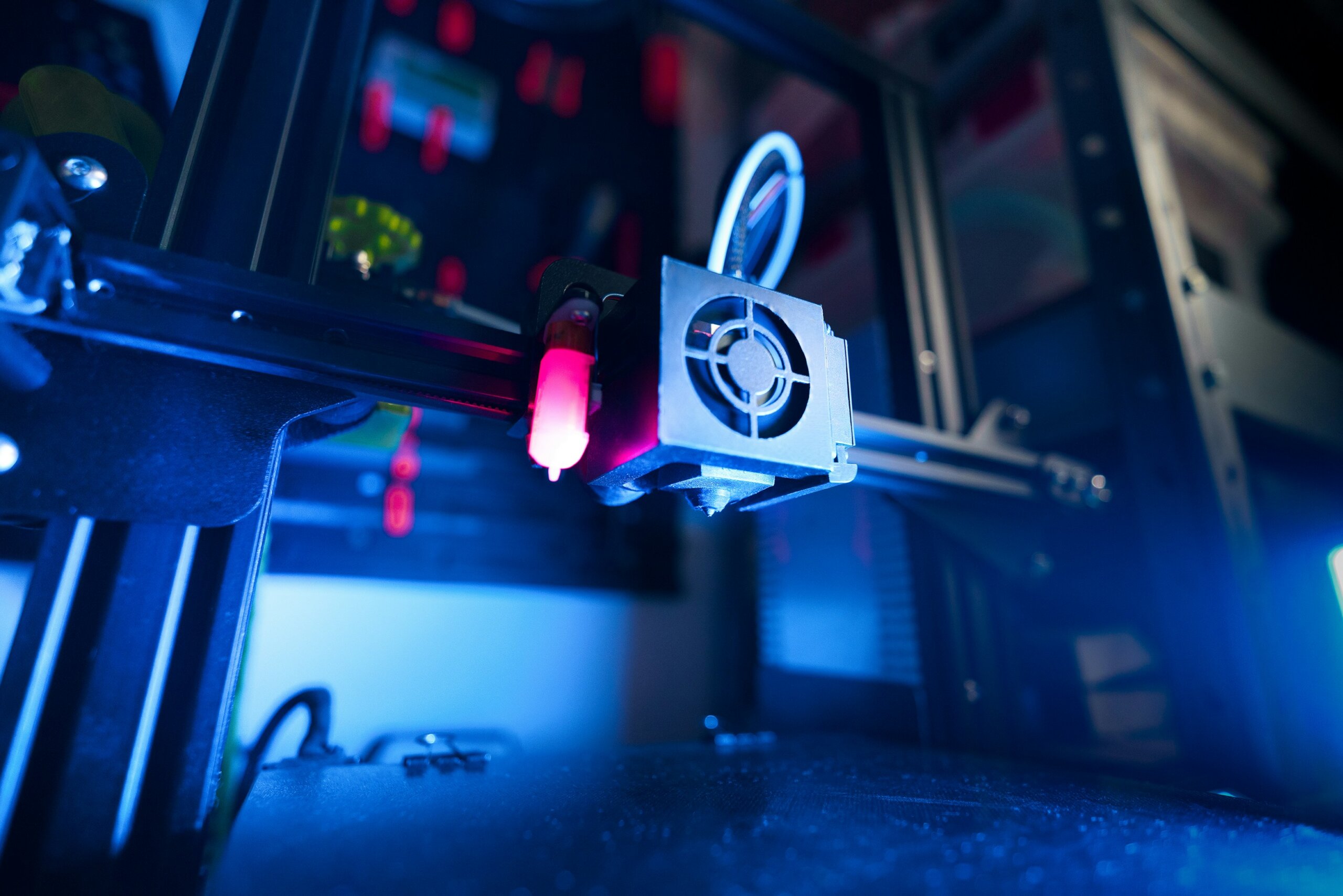
Plastic prototyping – methods, cost considerations and more
Blog
Plastic Prototyping – methods, cost considerations and more
Authored By: SDI Plastics
In the competitive landscape of modern product development, the ability to rapidly and efficiently produce functional prototypes has become a critical advantage for industries ranging from aerospace and automotive to consumer electronics and medical devices. Prototypes act as pivotal validation tools, bridging the gap between conceptual design and full-scale production by allowing engineers, designers, and stakeholders to assess key parameters such as form, fit, function, and manufacturability. As product life cycles continue to shrink and the demand for innovation accelerates, the need for rapid prototyping technologies has emerged as a fundamental driver of success.
Rapid prototyping, a collection of advanced manufacturing techniques that enable the accelerated production of physical models directly from digital designs—has revolutionised the product development cycle. By eliminating the need for traditional tooling, rapid prototyping allows for iterative design processes where multiple versions of a prototype can be tested and refined in a fraction of the time compared to conventional methods. This capability is crucial in industries where speed-to-market is often the deciding factor in maintaining competitive advantage.
Now within the space both rapid prototyping & metal prototyping has gained significant traction as companies increasingly require functional prototypes that simulate the mechanical properties of production-grade metals. Unlike plastic or resin-based prototypes, metal prototypes can endure higher stress and temperature conditions, making them invaluable for performance testing, especially in sectors like aerospace, automotive, and heavy machinery. Technologies such as Direct Metal Laser Sintering (DMLS) and Selective Laser Melting (SLM) have enabled the creation of complex, high-strength, metal parts directly from CAD models, eliminating the need for costly and time-consuming tooling.
In this article, we will explore the fundamentals of rapid prototyping and metal prototyping, delving into the technologies, materials, and technical considerations that make them essential for modern product development.
Rapid prototyping – accelerating the design cycle
Rapid prototyping refers to a set of technologies that allow for the fast creation of scale models or functional prototypes directly from CAD data. Its primary advantage lies in its ability to significantly reduce lead times and enable quick iterations, making it a vital tool for early-stage design validation.
Core technologies in rapid prototyping
The most widely used rapid prototyping methods are based on additive manufacturing (3D printing), which builds objects layer by layer from digital models. Below are the most common rapid prototyping technologies:
1. Fused deposition modeling (FDM)
- Process: FDM extrudes thermoplastic filament through a heated nozzle layer by layer, building the prototype from the bottom up.
- Materials: Common thermoplastics include PLA, ABS, PETG, and nylon.
- Use case: Ideal for creating conceptual models, form and fit testing, and low-cost prototyping. FDM is particularly useful for early-stage designs where precision is less critical.
2. Stereolithography (SLA)
- Process: SLA uses a laser to cure liquid photopolymer resin into solid plastic. As the laser traces each layer, the resin hardens, forming the prototype.
- Materials: Photopolymer resins, which can mimic a wide range of material properties, from rubber-like flexibility to high rigidity.
- Use case: SLA is known for producing highly accurate prototypes with smooth surface finishes, making it ideal for aesthetic models, intricate designs, and detailed prototypes.
3. Selective laser sintering (SLS)
- Process: SLS uses a laser to sinter powdered plastic, resulting in solid parts. This method allows for the creation of durable prototypes with complex geometries.
- Materials: Nylon, polyamide, and other engineering-grade thermoplastics.
- Use case: SLS is ideal for functional prototypes that require high strength, durability, and flexibility. It’s often used for creating mechanically functional parts that will undergo testing in real-world environments.
Benefits of rapid prototyping
- Speed: Rapid prototyping technologies can produce parts in as little as a few hours, depending on the complexity and size of the model. This quick turnaround time allows for faster design iterations.
- Cost-effectiveness: The ability to produce parts directly from CAD data without the need for expensive tooling reduces upfront costs, especially for early-stage development.
- Design flexibility: Additive manufacturing allows for the creation of complex geometries that would be impossible or prohibitively expensive to produce with traditional methods. Features like internal channels, lattice structures, and organic shapes can be easily manufactured.
- Iterative testing: Rapid prototyping enables quick design modifications and immediate re-testing, which is critical for refining products before committing to full-scale production.
- Material versatility: While primarily associated with plastics, some forms of rapid prototyping, such as Direct metal laser sintering (DMLS), can be used for metal parts, expanding the range of applications.
Metal prototyping – precision and performance
While plastic prototyping is often sufficient for early-stage designs, certain applications demand prototypes that replicate the mechanical properties, thermal resistance, and durability of the final product. This is where metal prototyping becomes essential. Metal prototypes are critical in industries like aerospace, automotive, and medical devices, where performance under stress and environmental conditions must be thoroughly validated.
Metal prototyping techniques

Several advanced manufacturing technologies are used for metal prototyping, each offering unique advantages in terms of precision, material properties, and scalability.
1. Direct metal laser sintering (DMLS)
- Process: DMLS is an additive manufacturing technique that uses a high-powered laser to fuse metal powder into solid parts layer by layer. The laser selectively melts the metal powder according to the CAD model, forming the prototype.
- Materials: Stainless steel, titanium, aluminium, and cobalt-chrome are commonly used in DMLS.
- Use case: DMLS is ideal for producing metal parts with complex geometries, internal structures, and high precision. It’s often used in aerospace, automotive, and medical applications where lightweight yet strong components are needed.
- Iterative testing: Rapid prototyping enables quick design modifications and immediate re-testing, which is critical for refining products before committing to full-scale production.
- Benefits: DMLS allows for the creation of fully functional metal prototypes with excellent mechanical properties, making it suitable for both testing and end-use applications.
2. CNC machining (METAL)
- Process: CNC machining is a subtractive manufacturing process where material is removed from a solid block of metal using rotating cutting tools controlled by a computer. It offers extremely high precision and is capable of producing parts with tight tolerances.
- Materials: Aluminium, stainless steel, brass, titanium, and other engineering metals.
- Use case: CNC machining is preferred for metal prototypes that need to match the final product’s exact material properties and tolerances. It is often used for functional testing of mechanical parts that will experience wear, stress, or exposure to harsh environments.
- Benefits: CNC machining delivers high accuracy and surface finishes, making it suitable for both prototyping and low-volume production of metal parts.
3. Metal casting
- Process: In metal casting, molten metal is poured into a mould, which is then allowed to solidify, creating the metal prototype.
- Materials: Cast iron, steel, aluminium, and magnesium, among others.
- Use case: Metal casting is particularly useful for creating large, durable prototypes or parts that will undergo extensive mechanical testing. It is also used when the final product will be cast, allowing for a direct comparison between the prototype and the final part.
- Benefits: Metal casting can produce parts with excellent mechanical properties and high durability, making it a common choice for automotive and industrial applications.
4. Sheet metal prototyping
- Process: This process involves cutting, bending, and forming sheet metal into the desired shape. It is often used to create enclosures, brackets, and other components that require a combination of strength and lightweight properties.
- Materials: Steel, aluminium, copper, and other metal alloys.
- Use case: Sheet metal prototyping is ideal for creating parts that require high strength-to-weight ratios, such as housings, panels, and structural components.
- Benefits: Sheet metal prototyping offers fast turnaround times, cost-effective production, and is scalable for both small and large production runs.
Benefits of metal prototyping
- Material strength: Metal prototypes allow for functional testing under real-world conditions, including high stress, heat, and corrosive environments. This ensures that the final product will meet performance requirements.
- Precision and tolerance: Metal prototyping processes like CNC machining and DMLS offer extremely high precision, allowing for the creation of parts with tight tolerances, which are essential in aerospace, automotive, and medical industries.
- Durability testing: Metal prototypes are often employed when the final product must endure mechanical wear and tear, high temperatures, or exposure to chemicals. These prototypes serve as the best approximation of how the final product will perform.
- Weight and performance optimization: In industries like aerospace and automotive, where weight is a critical factor, metal prototyping allows for the optimization of structures to ensure that the product meets both strength and weight requirements.
Selecting the right prototyping method
Choosing between rapid prototyping and metal prototyping depends on several key factors:
- Material requirements: If the prototype needs to closely mimic the mechanical, thermal, or chemical properties of the final product, metal prototyping is essential. For early-stage designs where functionality is secondary to form and fit, rapid prototyping with plastics may be sufficient.
- Design complexity: Additive manufacturing processes like DMLS and SLS are ideal for complex geometries that would be difficult or impossible to achieve through traditional manufacturing methods.
- Production volume: Rapid prototyping is generally more cost-effective for low-volume production or one-off prototypes, while metal prototyping is better suited for functional testing and pre-production runs.
- Lead time: For quick iterations and fast testing, rapid prototyping offers the shortest lead times. Metal prototyping processes like CNC machining or casting may take longer but provide more accurate performance data.
- Cost: Rapid prototyping is typically less expensive for early-stage development, but as requirements for durability and material fidelity increase, metal prototyping becomes more cost-effective in the long run, especially when testing for functionality.
Selecting the right prototyping method
Rapid prototyping and metal prototyping each serve distinct purposes in the product development process. Rapid prototyping, with its fast turnaround times and design flexibility, is ideal for early-stage validation and iterative design refinement. In contrast, metal prototyping provides the necessary robustness and precision for functional testing under real-world conditions.
By leveraging both approaches, companies can accelerate product development, reduce time-to-market, and ensure that their final products meet the highest standards of performance and reliability. Whether you’re building a concept model or stress-testing a fully functional part, the right prototyping method is integral to your success.
Book your free consultation
Give us a call to book your free consultation for your plastic solutions in Australia, and learn how much value can be added to your business with SDI Plastics by your side.